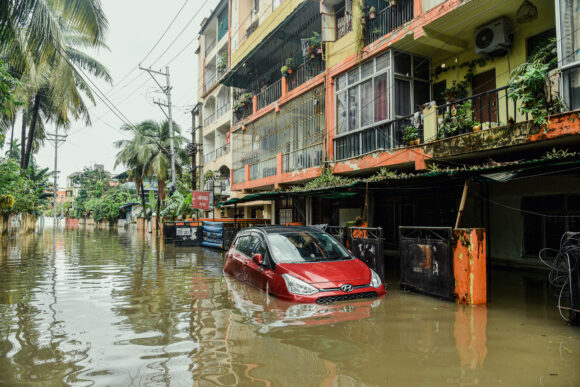The southwest monsoon’s early arrival in India this year is good news for crops, but exactly when, where, and how much rain will fall over the next few months are still difficult questions to answer.
To help solve that dilemma, India is hoping that a new weather model can significantly help boost its capabilities by forecasting at a resolution of roughly 6 kilometers (3.7 miles), doubling the level of detail previously possible. That means it can zero in on smaller geographic areas and give more localized predictions, helping farmers tailor their decisions and enabling better flood preparation ahead of extreme rainfall events.
“We will focus on all weather parameters, with rain being the key,” Mrutyunjay Mohapatra, director general of the India Meteorological Department, told reporters Monday after the launch of the new model, called the Bharat Forecast System. It will enhance the accuracy level, massively support farmers and improve public safety, he said in New Delhi.
Despite major advancements over the decades, it’s still hard to perfectly predict rainfall in the tropics compared with areas further away from the equator. That’s largely because precipitation in the tropics is driven by smaller weather patterns that are difficult to discern, versus large-scale patterns in regions such as North America and Europe.
Two models that analyze the atmosphere are seen as the gold standard of weather predictions: the Global Forecast System by the US, and the Integrated Forecast System by a European intergovernmental body. Many countries, including India, take data from them to customize for their own regions.
The IMD’s new platform has been developed by scientists at the Indian Institute of Tropical Meteorology. They’ve used the country’s customized version of the GFS, and sharpened it using a new grid structure that divides the globe into triangles. This approach enables it to make localized predictions for areas roughly the size of a cluster of Indian villages.
Meteorologists across the world have been working on making their predictions more accurate and detailed. However, localized extreme weather events have led to demand for finer resolution models, Earth Sciences Minister Jitendra Singh said at a briefing.
For example, knowing the precise location and time of heavy rainfall can improve disaster preparation and response, saving lives and money. Farmers can also better time their planting activities with more detailed forecasts, raising crop yields.
The country has invested nearly 9 billion rupees ($106 million) in a new supercomputer to power weather and climate research, and aims to more than double the size of its weather radar network in two years to feed the model with additional data, according to the earth sciences ministry.
Photograph: Floodwater outside a house in Guwahati, India, on May 20, 2025. Photo credit: Hafiz Ahmed/AFP/Getty Images
Topics Flood Agribusiness India
Was this article valuable?
Here are more articles you may enjoy.



 Hartford: 10-Year Analysis Shows Shifts in Common, Expensive Small-Business Claims
Hartford: 10-Year Analysis Shows Shifts in Common, Expensive Small-Business Claims  What to Expect in 2026: US P/C Results More Like 2024
What to Expect in 2026: US P/C Results More Like 2024  Owner of Historic Minnesota Resort Charged With Arson, Insurance Fraud
Owner of Historic Minnesota Resort Charged With Arson, Insurance Fraud  Truckers Who Fail English Tests Are Pulled Off Roads in Crackdown
Truckers Who Fail English Tests Are Pulled Off Roads in Crackdown 

